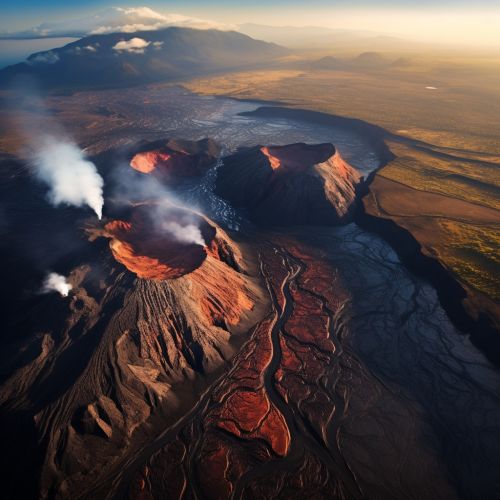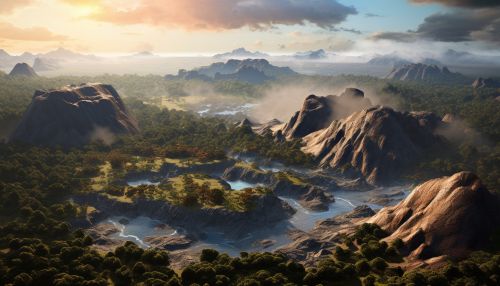The Science of Earths Volcanic Hotspots and Plate Tectonics
Introduction
The Earth's crust is a dynamic and ever-changing landscape shaped by various geological processes. One of the most significant of these processes is the movement of tectonic plates, which can lead to the formation of volcanoes and volcanic hotspots.


Tectonic Plates
Tectonic plates are large pieces of the Earth's lithosphere that fit together like a jigsaw puzzle to form the Earth's crust. These plates are not stationary but are constantly moving due to the convection currents in the underlying asthenosphere. This movement can be as little as a few millimeters to several centimeters per year.
There are two types of tectonic plates: oceanic and continental. Oceanic plates are denser and thinner, primarily composed of basalt, while continental plates are less dense and thicker, composed mainly of granite. When these plates interact, it leads to various geological phenomena such as earthquakes, mountain formation, and volcanic activity.
Plate Tectonics
Plate tectonics is the scientific theory explaining the movement of the Earth's crust. It is the underlying principle behind our understanding of earthquakes, volcanoes, and the creation of mountain ranges.
The theory of plate tectonics posits that the Earth's crust is divided into several large and small plates that float on the semi-fluid asthenosphere. The movement of these plates is driven by the heat from the Earth's core, creating convection currents in the mantle.
There are three types of plate boundaries: convergent, divergent, and transform.
Convergent Boundaries
Convergent boundaries occur when two tectonic plates move towards each other. This can result in one plate being forced beneath the other in a process known as subduction. The subducting plate is forced into the mantle where it melts, creating magma. This magma can rise to the surface, leading to the formation of volcanoes.
Divergent Boundaries
Divergent boundaries occur when two tectonic plates move away from each other. This movement creates a gap which is filled by magma rising from the mantle, creating new crust. This process is known as seafloor spreading and is most commonly observed along mid-ocean ridges.
Transform Boundaries
Transform boundaries occur when two tectonic plates slide past each other horizontally. This movement can cause intense earthquakes but does not typically result in the formation of volcanoes or new crust.
Volcanic Hotspots
Volcanic hotspots are areas of the Earth's surface that have experienced prolonged volcanic activity. Unlike most volcanoes, which are located at tectonic plate boundaries, hotspots are typically found in the middle of tectonic plates. The Hawaiian Islands, the Yellowstone Caldera, and the Galápagos Islands are examples of volcanic hotspots.
The theory of hotspot volcanism suggests that these areas are the result of a mantle plume, a column of hot rock rising from deep within the Earth's mantle. As the tectonic plate moves over the stationary mantle plume, it creates a chain of volcanoes.
Relationship Between Plate Tectonics and Volcanic Hotspots
The relationship between plate tectonics and volcanic hotspots is a complex one. While most volcanic activity is associated with plate boundaries, hotspots provide a unique case of volcanism occurring in the middle of a plate.
The movement of tectonic plates over a stationary mantle plume can create a chain of volcanoes, known as a hotspot track. The age of the volcanoes along the track can provide information about the direction and speed of the tectonic plate movement.
Moreover, the study of volcanic hotspots can provide valuable insights into the Earth's mantle's composition and the dynamics of mantle convection.
Conclusion
The science of Earth's volcanic hotspots and plate tectonics provides a fascinating insight into the dynamic nature of our planet. The movement of tectonic plates shapes the Earth's surface, leading to the creation of mountains, earthquakes, and volcanic activity. Volcanic hotspots, while not as common as boundary-related volcanoes, offer a unique perspective on the Earth's internal processes and the movement of tectonic plates.
